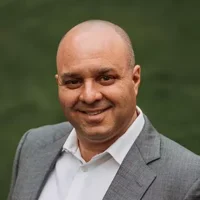According to Definitive Health’s 2019 Annual Healthcare Trends Survey:
38% of Hospital Executives reported reducing operating expenses
was their number one priority for 2019.
The challenge is….how do we effectively reduce costs while at the same time, not compromise patient care? I believe the answer is getting smarter at HOW and WHERE we provide great care.
I can tell you this—it isn’t in the hospital. Hospitals aren’t safe places for patients. Wait, WHAT? Why is that? In an article by Dr. Ross Walker in “Healthcare in America,” he states that 250,000 deaths occur per year in the US directly related to medical errors “…making it the third leading cause of death, not to mention disability after cardiovascular disease and cancer”. Additionally, hospital-acquired infections are another problem for hospital stays. The latest statistics from the Centers for Disease Control and Prevention finds that about 1 in every 25 patients will get an infection while hospitalized. So, what kind of infections are most common in the hospital environment? According to the CDC: “Corynebacterium, Staphylococcus, and Streptococcus [can be found] on phones, countertops, and computer mice in nurse stations. These bacteria are responsible for infections like diphtheria, Methicillin-resistant Staphylococcus aureus, and pneumonia—diseases especially dangerous to people with weakened immune systems.”
There has been a recent movement and focus on keeping patients healthy and out of the hospital, and on shifting our priorities to out-patient strategies. We should be providing care in the least restrictive way and at the lowest price point possible. And, insurance companies agree and penalize hospitals for readmissions for certain diagnoses within a 30-day period.
This shift requires us to think about how we can keep patients safe and non-hospitalized while still providing great care with the lowest cost. Patients with chronic illnesses, mental health disorders, and other high-risk conditions require frequent care and 1:1 time with their healthcare provider. Doctors are spread thin and need resources that are effective and that allow them to easily care for their patients.
An effective discharge management process is essential to
keeping patients out of the hospital once discharged.
Patients readmitted within 30 days of discharge often result in a significant penalty not only to hospitals but providers. Specialists should have a rounding solution that enables their out-patient staff to schedule appointments at the bedside while patients are still in the hospital. Setting the appointment for patients at the bedside greatly increases the likelihood of adherence to them.
Enter Telemedicine/Telehealth
Only 44.8% of the responding organizations in the Definitive Health Survey currently use a telehealth solution, with 48.8% responding that they do not use any telemedicine in their practice.
Companies like iTel, a telemedicine company in Scottsdale, Arizona, provide care through a secure HIPAA-compliant video software platform. Care is therefore provided remotely and the patient can be at home while the physicians are at their clinic or at home too. The virtual delivery of healthcare without an “in-person” visit is fully reimbursable and recognized by nearly every insurance carrier in the U.S. to some extent. This technology enables patients to overcome distance barriers or the inability to get to appointments at out-patient facilities, which greatly improves 1:1 opportunities to be spent with their provider.
Improving Patient Access
Telehealth or Telemedicine does several very positive things for the delivery of care in the United States. Below are 5 significant benefits of utilizing a remote platform:
- Improved Efficiencies, which positively impact the national physician shortage
- Improved Access for Patients to their Provider of Choice
- Improved Remote Patient Monitoring
- Decreased Hospitalization
- Decreased Costs
Rounding physicians can utilize telehealth to follow up with their patients once they are discharged from the hospital. Utilizing this technology, the provider can also use the built-in charge capture and secure messaging capabilities while also collecting data necessary to maintain continuity of care for the patient.
Recently, HybridChart partnered with iTEL, a Scottsdale-based Telehealth company. iTel provides secure video for telehealth through a Video-as-a-Service (VaaS) model, and is fully integrated with large Electronic Health Record (EHR) platforms (including Topaz/NextGen) with its universal API. iTel brings an end-to-end solution for telehealth with integrated scheduling, billing, and revenue cycle management that can be integrated with any EHR. With iTel, both medical and mental health providers located in clinics and hospitals can connect with new or existing patients through a secure video session and screen share via any mobile device, smartphone or tablet, maintaining their privacy and security, and continuity of care—from the office to their work or home. iTel is based in Scottsdale, Arizona.
Smarter Rounding and Workflow Software for Doctors
At HybridChart, we support innovation in medicine, and provide technology that connects your healthcare team, increases efficiencies, AND improves your bottom line. HybridChart’s cloud-based software adapts to your practice’s unique workflow and will improve your profitability and patient outcomes by utilizing our 5 features: census management, charge capture, secure messaging, discharge management, and data analytics.
NEVER miss another charge and get PAID for the work you do!
If you are interested in taking your medical practice to the next level and want to employ the best hospital charge capture practice available in the industry, come visit our website at www.hybridchart.com, or call us at 1-877-684-0608 for a demo today!







